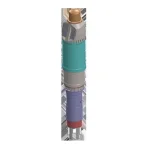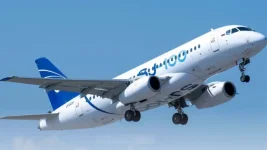- Views: 43
- Replies: 1
French aerospace firm Safran Aircraft Engines has given assurances that its next-generation fighter engine, being co-developed with India's Gas Turbine Research Establishment (GTRE), will be designed with the exact physical specifications as the American-made General Electric F414 engine.
This strategic decision to match the engine's dimensions—including its length, diameter, and mounting interfaces—will create a "plug and play" powerplant.
Such a design would allow the new engine to be easily installed in any aircraft currently using the GE F414, paving the way for simple retrofits and dramatically simplifying logistics for India's future fighter fleet.
According to sources familiar with the discussions, the new engine's footprint will mirror the F414’s approximate 4,000 mm length and 1,100 mm diameter.
This commonality is a key part of the ongoing joint development talks and is intended to accelerate integration timelines by minimising the need for any airframe modifications.
The new engine, which is projected to produce a powerful 120kN to 140kN of thrust, is critical for India's most ambitious aviation programmes.
The 120kN baseline variant is slated to power the production version (Mk2) of the Advanced Medium Combat Aircraft (AMCA), India's fifth-generation stealth fighter. It is also the intended engine for the Navy's Twin Engine Deck Based Fighter (TEDBF).
While the initial AMCA Mk1 prototypes will fly using the 98kN GE F414, the more powerful co-developed engine is essential for the definitive Mk2 version to achieve key performance metrics like supercruise (supersonic flight without afterburners).
This collaboration is expected to include a 100% Transfer of Technology (ToT) to India, a landmark step in building a sovereign defence industrial base.
This common design also offers a significant long-term upgrade path for the Tejas Mk2. The 4.5-generation Tejas Mk2 is set to enter production in the late 2020s using the GE F414.
With this new engine available, the Tejas Mk2 fleet could undergo a mid-life upgrade around the 2040s. This would provide the aircraft with the additional power needed to integrate next-generation weapons and enhanced sensors, ensuring it remains a formidable asset for decades.
The adoption of a common engine across the Tejas Mk2, AMCA, and TEDBF fleets promises multifaceted benefits. It would streamline maintenance, training, and the spare parts supply chain, potentially cutting fleet ownership costs significantly.
Economically, the full technology transfer under the "Make in India" initiative would create a domestic supply chain for over a thousand engines, bolstering strategic autonomy and reducing dependence on foreign suppliers.




